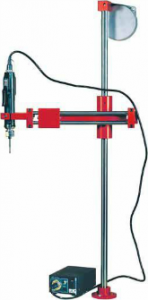Reduce Workers’ Compensation Claims in the Assembly Area
 When planning a production area, it pays dividends in the long term to plan the ergonomics of the operation and consult a health and safety inspector or ergonomic manager. Ensure both the workplace and the assembly operation is compatible with the majority of operators who will work there. This can reduce future costs arising from work-related health disorders among operators, along with costs arising from poor product quality. Also, the need to redesign the production system later may be avoided.
When planning a production area, it pays dividends in the long term to plan the ergonomics of the operation and consult a health and safety inspector or ergonomic manager. Ensure both the workplace and the assembly operation is compatible with the majority of operators who will work there. This can reduce future costs arising from work-related health disorders among operators, along with costs arising from poor product quality. Also, the need to redesign the production system later may be avoided.
The goal for all ergonomic and safety managers is to reduce the number of people suffering from work-related injuries. With the cost for worker’s compensation continuing to increase, companies are looking for ergonomic solutions to reduce the costs of insurance claims.
In the Assembly Area, Does Your Company Have a Strategy for Reducing Injury Loses?
Every workstation is unique. The human being represents the largest collection of variables; therefore a workstation that suits one operator perfectly may be a disaster for another. This could be one of the reasons why problems often arise unexpectedly when a new production unit is started up.
The goal must be to design workstations where every member of the actual workforce can work comfortably. This calls for a large degree of adjustability that often increases the cost. However, the investment can be justified by the resulting high flexibility.
 Some key questions to ask about your production area.
Some key questions to ask about your production area.
– How often do your assemblers complain of fatigue or arm pains?
– How much does a typical injury cost the organization?
– How many workman comp claims have you had?
– How often does a health and safety inspector review your applications?
– What ergonomic solutions are being considered for that application?
A Torque Arm securely keeps an electric or pneumatic tool in perpendicular alignment to help prevent side loading or cross threading occurring during the assembly process. The ergonomic design of the EZ-Glider Torque Arms reduces RMI (repetitive motion injury) and CTS (carpal tunnel syndrome).
These Torque Arms can be used with a variety assembly tools like, electric & Pneumatic Screwdrivers, angle nut runners, pulse tools, pistol grip style tools, grinders, impact wrenches, drills, sanders, and percussion tools.
Source By: Mountz
